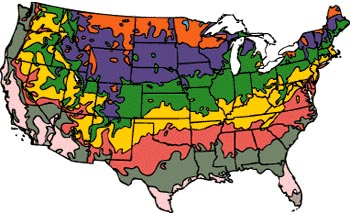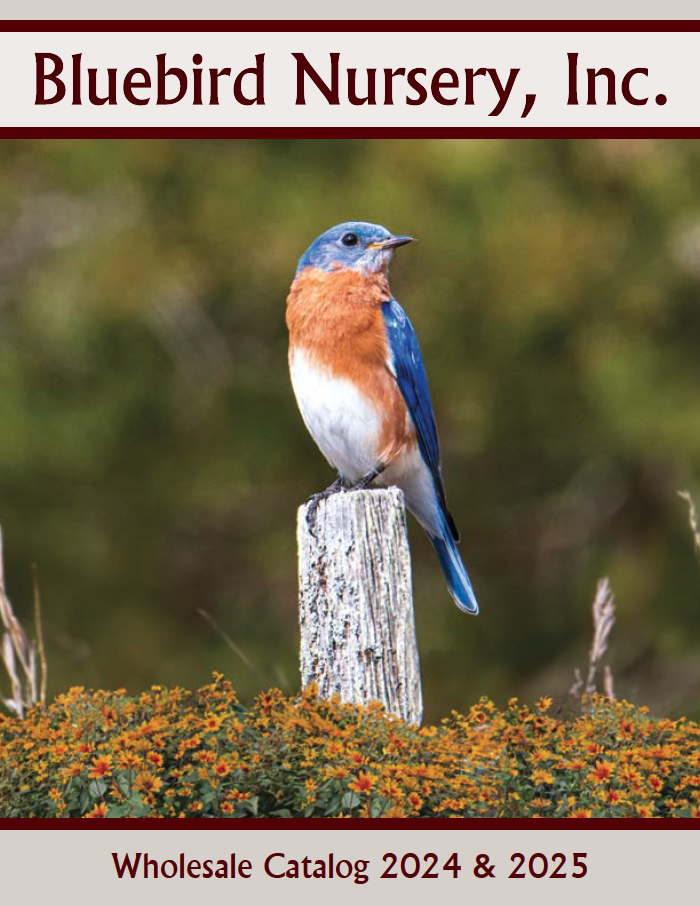Zones
 Below -50° Below -50° -50° to -40° -50° to -40° -40° to -30° -40° to -30° -30° to -20° -30° to -20° -20° to -10° -20° to -10° -10° to 0° -10° to 0° 0° to 10° 0° to 10° 10° to 20° 10° to 20° 20° to 30° 20° to 30° 30° to 40° 30° to 40° Above 40° Above 40°
|

|
Bluebird is in Zone 5 (H says Zone 4 starts 1/2 mile north!) This map is far to small to give you more than a rough idea. The large wall sized ones show detail much more clearly and are an excellent innvestment!
You will find cold hardiness zones listed with each product. This is done reluctantly because there are so many variables with hardiness. Since most cold zone maps are based on a 25 year average, they can be totally meaningless in any given winter. In a good year, Zone 5 may become a Zone 6 quite easily, and on the other end of the spectrum, in a cold winter, Zone 5 may become a Zone 3!
Conditions vary with snow cover, early and late frosts, moisture in the soil and protection. You may even create your own micro-climate with protection between buildings, near trees, walls, etc.
To add to your confusion (or your knowledge), after almost 15 years of intensive labor, the American Horticultural Society has released a heat-zone map. This map will act as a companion to the hardiness cold-zone maps with the intention of helping the industry grow plants that fourish year-round.
The zones in our catalog are guesstimated hardiness zones based upon USDA maps, various publications and our 40+ years of experience with perennials. (Bluebird is located 1/2 mile south of the Zone 4-5 border!)
The Shade/Sun needs may also vary as to your location. Plants that need shade in Arkansas may thrive in full sun when planted in Minnesota.
We urge you to question zone maps and light requirements. Many elements affect final plant performance results and stamina. Use information you have gathered from personal results in your plantings, as well as facts gathered from industry research.
American Nursery & Landscape Association
1250 'I' street, N.W. Suite 500
Washington, DC 20005
Phone: 202-789-2900
FAX: 202-789-1893


